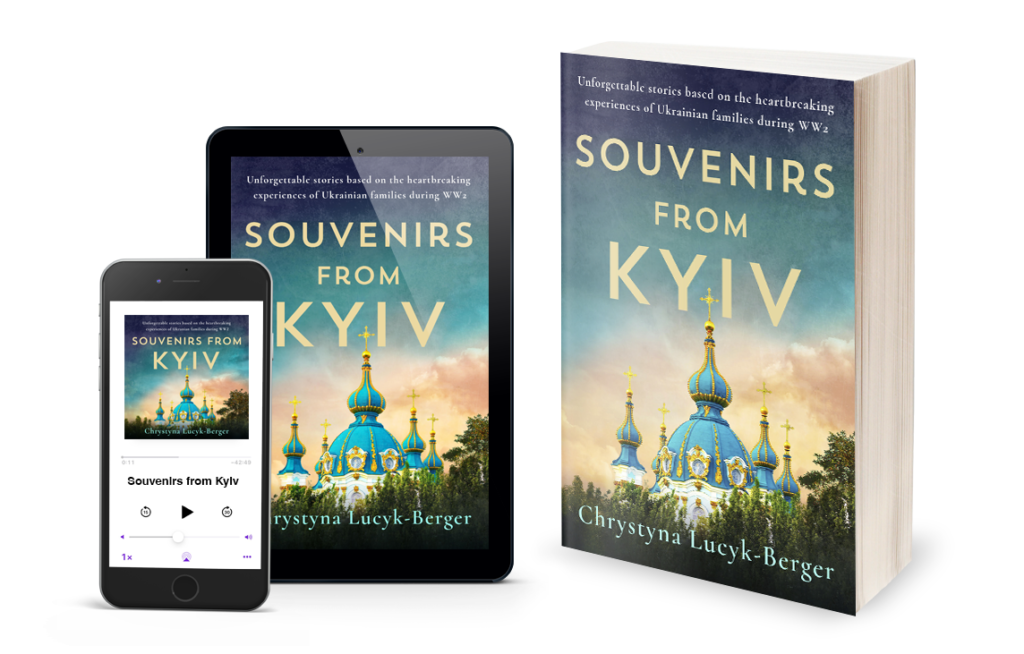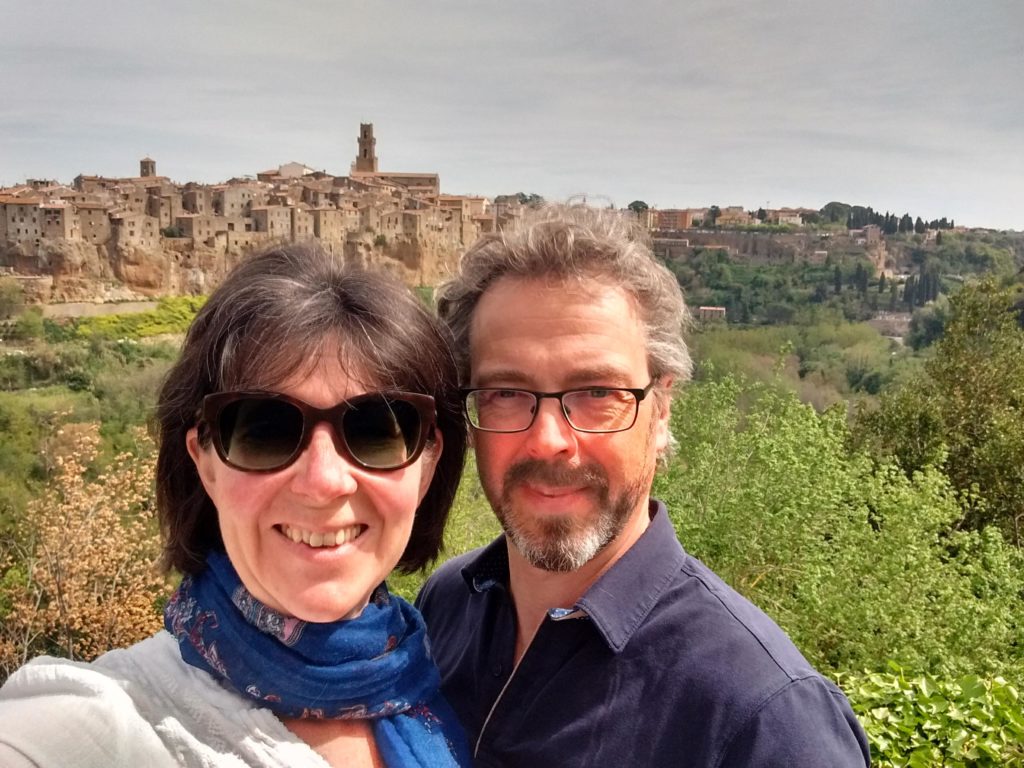
One of the things I have to deal with as an ex-pat and when communicating with my family is to justify all the “time off” we get here in Europe. “You’re always on vacation,” my brother once accused, the envy oozing through the phone. Five weeks of holidays in Austria is standard. And if you calculate all the Catholic holy days, it adds up to about 7 weeks, many of those holidays falling around the Easter season.
Between March and June, there are approximately 6 “Fenstertage”. “Fenstertag” literally means “window day”. If a holiday falls on a Thursday, more often than not, Friday is a day off and offices remain closed or offer limited services.
The next thing—besides all these lovely days off—is to experience the Austrian traditions around these holidays, and especially in Tyrol. They ring with familiarity in regard to my own family’s Ukrainian heritage and there are also a lot of unique and surprising tidbits. In February, I covered the carnival traditions leading up to Lent. For April and May, I’ve put together a two-part series detailing the traditions surrounding Palm Sunday to Corpus Christi; traditions practiced in Austria between March and end of June. They are so integral to the culture here that, in writing the Reschen Valley series, I had to make sure they were included.
PART 1: Palm Sunday to Easter Monday
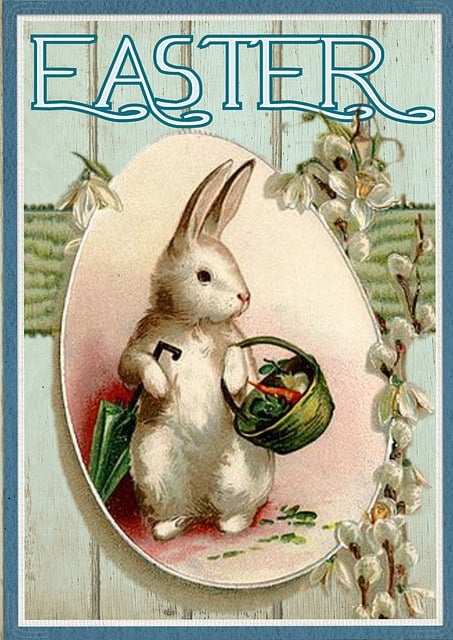
PALM SUNDAY
Already one week before Easter the first customs begin with Palm Sunday. At the Palm Consecration, the entry of Jesus into Jerusalem is celebrated with so-called Palmbuschen, a bouquet of pussy willows decorated with colorful ribbons.
In Imst, Tyrol, competitions are held for the largest pussy willow arrangements. The artfully decorated slats rise up to 35 metres high. Young men manoeuvre them through the streets on Palm Sunday with acrobatic movements.
People use the pussy willows or palms throughout the world to tap out greetings and expressions. For example, in Ukrainian, we had a rhyme that went something like this: “The pussy willows are beating you, not me, to remind you that, in one week, it will be Easter.” Another one “Be as big as the willow, healthy as water, rich as the earth”.
In contrast to the pussy willow slats, the bouquets of pussy willows are often placed at home in a vase together with branches of forsythia—their egg-yolk-yellow blooms the official heralders of spring. They are further decorated with colorfully designed Easter eggs.
EASTER MARKETS
The numerous Easter markets also have a tradition throughout Austria. From Vienna to Vorarlberg, Easter crafts markets are held in the weeks before Easter. Elaborately designed Easter eggs, spring decorations and, of course, culinary delicacies are on offer here. Sometimes eggs are also blown, decorated and hung on a branch in order to bring good luck.
Blown eggs are painted and embellished. In Stinatz in southern Burgenland, women use sharp knives to carve filigree patterns into colorfully-coloured eggs and transform them into small works of art. My husband comes from Styria, which is near Burgenland, and I found traditions that echoed what I had grown up with in the U.S. based on my Ukrainian heritage.
Ukrainians are well-known for their intricately painted pysanky. If you’re interested in the process, you can watch it here. The Easter egg shown here is a Ukrainian one.
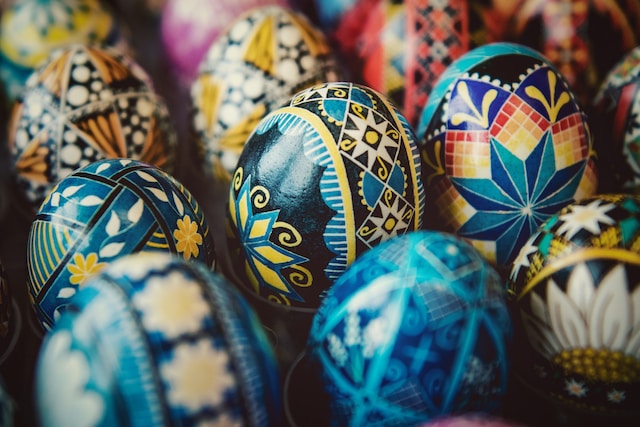
The blessing of Easter baskets, I was delighted to learn, are also practiced in the Austrian Catholic churches. I grew up with Holy Week in the Ukrainian Catholic and Orthodox churches being my absolute favorite week of the year (we celebrated both). Even more so than Christmas! And I loved helping prepare the Easter basket. It’s very similar to what my Austrian friends and family practice:
- Paska (a yeast bread) — Christ, Our Bread of Life
- Eggs — New Life and the Resurrection of Christ
- Horseradish — The Passion of Christ
- Bacon — God’s Mercy (go ahead bacon lovers, laugh. I did.)
- Cheese — the moderation that Christians should show in all things
- Salt — The duty of Christians to others
- Ham — The great Joy and abundance of Easter
- Butter — The Goodness of Christ

HOLY WEEK-EASTER SUNDAY
From Maundy Thursday to Holy Saturday the church bells remain silent because, according to tradition, the bells have flown to Rome.
Instead, children walk through the villages with so-called “ratchets”, wooden rattling instruments which they make a racket with while calling out traditional blessings. (By the way, I have just added Maundy Thursday in Sevilla to my bucket list, as I have heard that the processions there is–without a doubt–the most impressive in the world.)
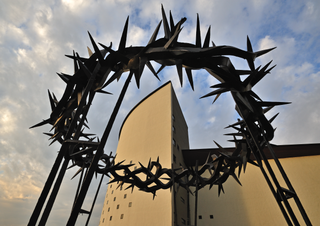
Easter Festival Tirol is one of the most prestigious and recognized Easter festivals in German speaking countries.
Every year, concerts, dance performances and passion music are presented over a two-week period. In Erl, the oldest German Passion Play is performed every six years. Around 600 amateur actors from the local community actively participate in the play that depicts the crucifixion of Christ. It’s incredibly moving. Bring tissues.
During the Easter holidays (especially in Tyrol), Easter graves (also called “holy grave”) can be seen in some churches. Much like you might find the nativity scenes in churches at Christmas, tombs with Christ laid to rest are made of wood. In the Ukrainian churches, we have what is called the plashchanytsja, a large piece of linen with the body of Christ imprinted upon it. On Good Friday, when it lain upon the altar, signifying the tomb, the congregation comes to kiss the hands and feet of Christ, where they had been nailed. You can read more about the Ukrainian traditions in this lovely blog.
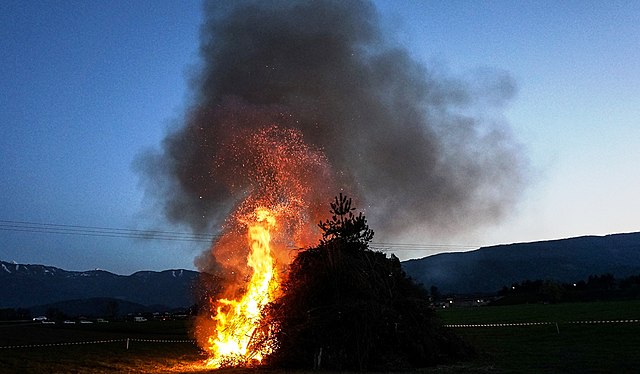
Another long tradition in Austria is the Easter fire. In the night from Holy Saturday to Easter Sunday, congregations light bonfires, some reaching as high as six meters. In many places it is also customary for godparents to present their godchildren with a pastry woven from yeast dough. They are artfully woven brioche within which is a hidden coin.
On Holy Thursday the boiled eggs are colored and decorated by children. On Easter Sunday the eggs are put into a basket and brought to the church for the Easter Mass. After the Mass there is a competition: people get together with an egg each and try to break the shell of the rival’s egg. The egg that remains intact wins and the winner of the egg hangs it on a tree branch as a sign of good luck.
Easter Egg hunts remain traditional, as do the chocolates, bunnies and chicks. Long ago, young ladies used to give an Easter egg to the man they would like to marry within that year.
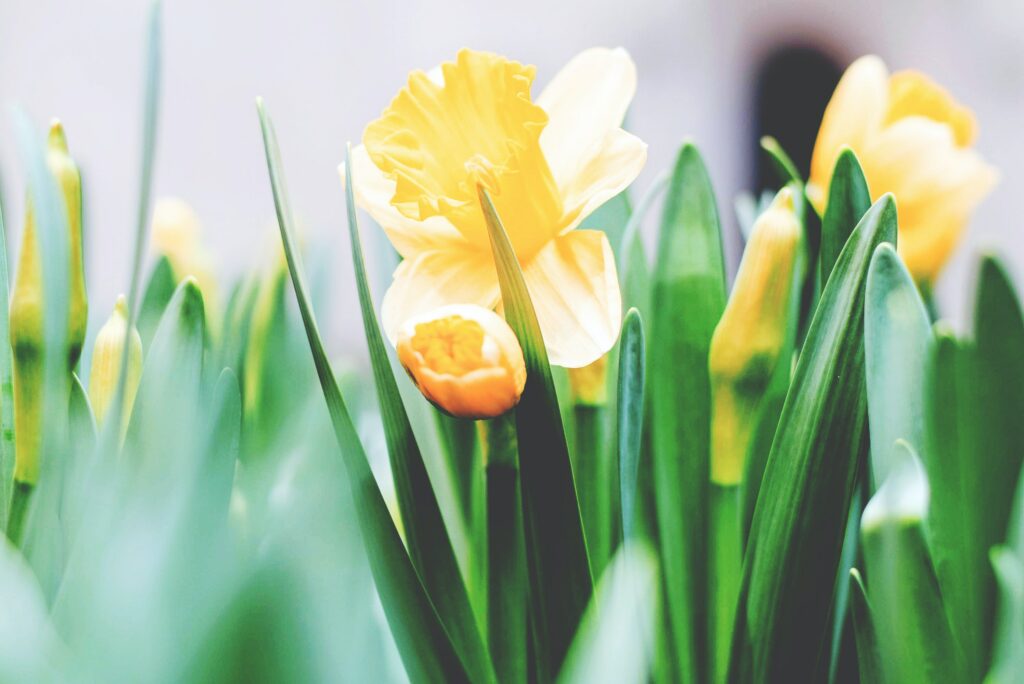
EASTER MONDAY
Easter Monday is a public holiday. Some Austrian and German areas celebrate by taking a hike to the next pilgrimage chapel or church, accompanied by prayers and songs.
Another characteristic of the Easter walk, “Going to the Green”, goes back to an old custom from the Weinviertel. Winemakers and their helpers go “cellar hopping” for the first tastings of the new vintage. In Vorarlberg, a heavy, dark beer, called Osterbock is served at parties held at the local fire stations (I know! Right?). It’s only available on sale for a few months before and after Easter.
In the Salzkammergut, there is a very curious custom, called Oarradeln, or Eierradeln in dialect. Supposedly done to educate the local inhabitants to be more careful, in the night between Easter Sunday to Easter Monday, all wheeled objects standing unlocked are likely to be “kidnapped”. It is not uncommon to find your bicycle on the roof of your garage on Easter Monday.
Every European Christian nation has their own traditions in celebrating Easter Monday. For example in our Ukrainian tradition it is called wet Monday.

On Easter Monday, the men and young boys visit the homes of their friends where they throw water on the women, usually on their hands. In doing do they say “Khrystos Voskres!” (Christ is Risen!) while the girls reply “Voistynu Voskres!” (Indeed He is Risen!). The practice of throwing water on a young woman is said to represent purification and fertility. Many times the young men like to have fun when they go “polyvaty” and go beyond the bounds. They probably will pour buckets of water on the girl or lead her to a well and give her a good soaking. Easter Tuesday is the time when the women take revenge on the men.
Next month, I’ll cover the Ascension to the Feast of Corpus Christi!




